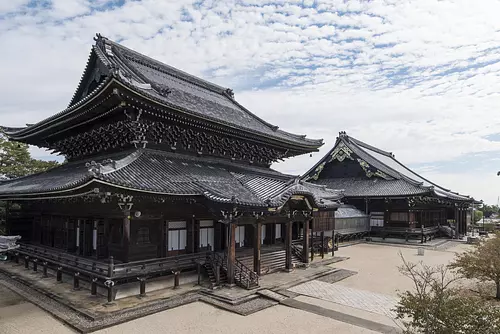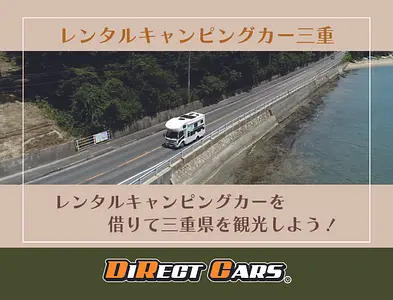``Asada Family'' photographer Masashi Asada visits places connected to his hometown of TsuCity, including Takada Honzan.
掲載日:2021.07.02
Masashi Asada, a photographer from TsuCity City, Mie Prefecture, has taken pictures of places connected to his hometown of Tsu City, such as SENJUJIHeadTempleoftheShinshuTakadaSchool, which was the filming location for the movie "Asada Family!", and Yakiniku Hormone and Tenpuku, where Asada worked part-time during TsuCity school. We will visit the locations of Don't miss the wonderful photos taken by Mr. Asada himself at each interview location!
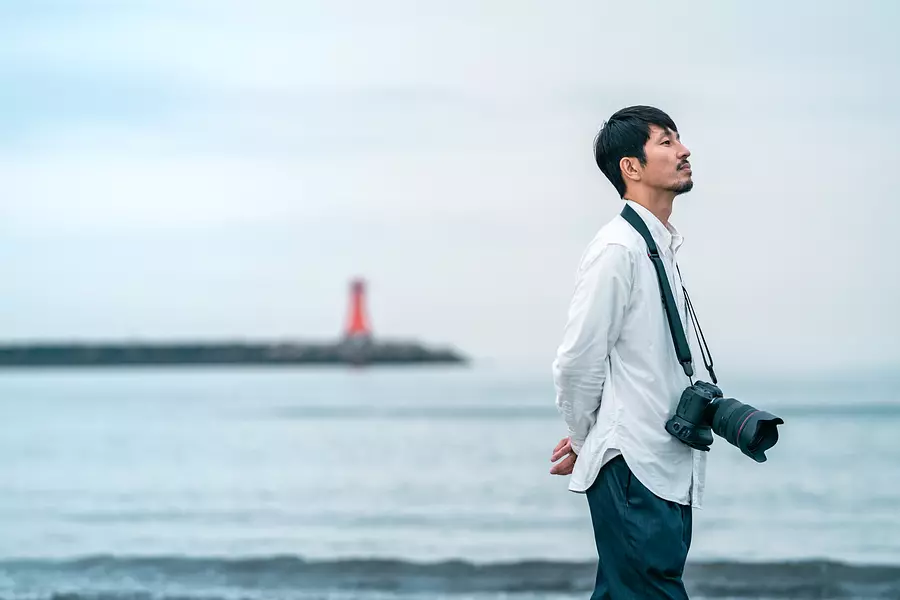
*Masks are removed only when taking photos.
Click here for Part 1: “Visiting recommended tourist spots in TsuCity, including Tsu Yacht Harbor.”
Click here for Asada's profile
Click here for information about Mie Travel Camera Club
- SENJUJIHeadTempleoftheShinshuTakadaSchool
- Yakiniku hormone and Tenpuku
- Hyakugo Bank Marunouchi Headquarters Building
SENJUJIHeadTempleoftheShinshuTakadaSchool
059-232-4171
Because the temple closes at 15:30,
If possible, please arrive by around 3:00 pm.
Teahouse Renshinan 10:00-15:00
There is a large parking lot (free of charge, bus available) near JR isshinden Station.
Click here for details (Google Maps) https://goo.gl/j7sXoB
5 minutes walk from JR isshinden Station
15 minutes from JR/Kintetsu Tsu Station by bus bound for isshinden or Mie Hospital, get off at Motoyama-mae bus stop
Approximately 15 minutes from Ise Expressway Tsu IC
Approximately 15 minutes from Ise Expressway Geino IC
Head temple of the Takada school of Shinshu Senshuji is the head temple of the 600 or so temples of the Takada school of Shinshu, whose founder is Shinran Shonin. The precincts are as large as two Tokyo Domes and are home to a variety of historical buildings, including many national treasures and important cultural properties designated by the country. In 2017, Mieido and Nyoraido were designated as Mie Prefecture's first national treasure buildings.
Movie “Asada family! '', the Asada brothers used it as a memorable place to take photos for New Year's cards.
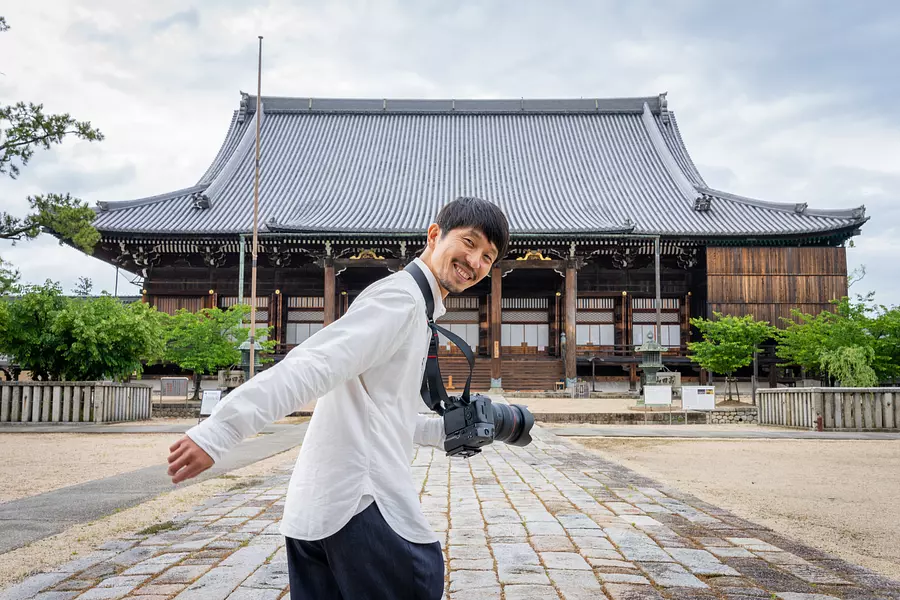
*Masks are removed only when taking photos.
First, let's go to Mieido, which was built in 1666! Our guide will be Mr. Murakami, an employee of SENJUJIHeadTempleoftheShinshuTakadaSchool.
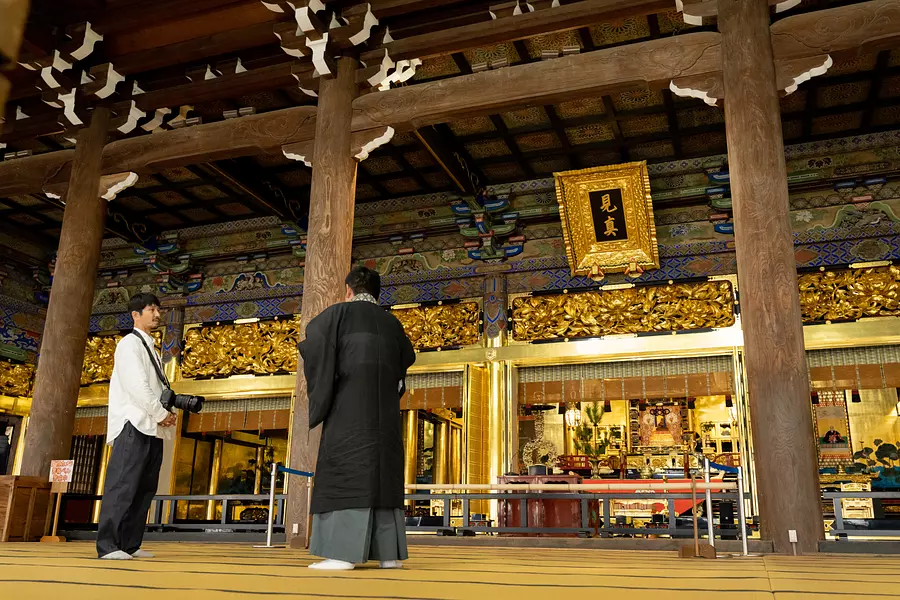
Mieido is said to be one of the five largest Edo period temple buildings in Japan (42.72m wide, 33.50m deep).
Mr. Murakami: The reason why it is decorated with gold leaf and richly colored carvings is to express the Western Pure Land (written in the sutra). There is a Buddhist term called ``Mean'', but originally ``Mean'' did not mean ``lie'' but ``reach''. The dictionary describes it as ``a guide to the teachings of truth,'' and the beautiful majesty inside this hall is truly a cry from the Western Pure Land.
Asada-san Kenshin. It's nice to look at the truth. The word ``true'' is also in the photo, and it feels somewhat familiar to me.
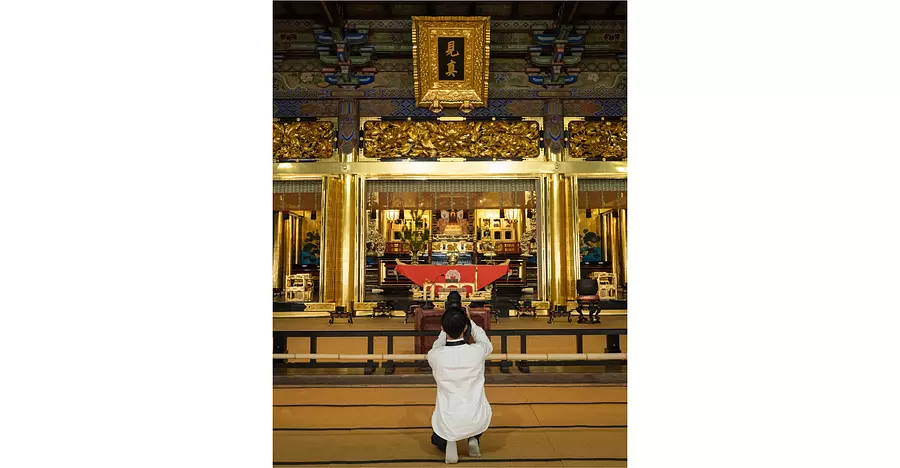
Mr. Murakami: Once upon a time, Emperor Meiji was honored with the title of ``Kishin Daishi'' by the saint Shinran. In the sutra called Muryoju Sutra, there is a phrase that says, ``Enlightenment is true, ability is beyond belief.'' I've heard that this means "eyes of wisdom that see through the truth and pass it on to the other side." Regarding ``truth,'' Shinran Shonin says, ``Truth is not lying or flattering people,'' or in other words, ``Truth does not change its attitude depending on the other person.''
Mr. Asada: I would like to take a photo with that kind of posture.
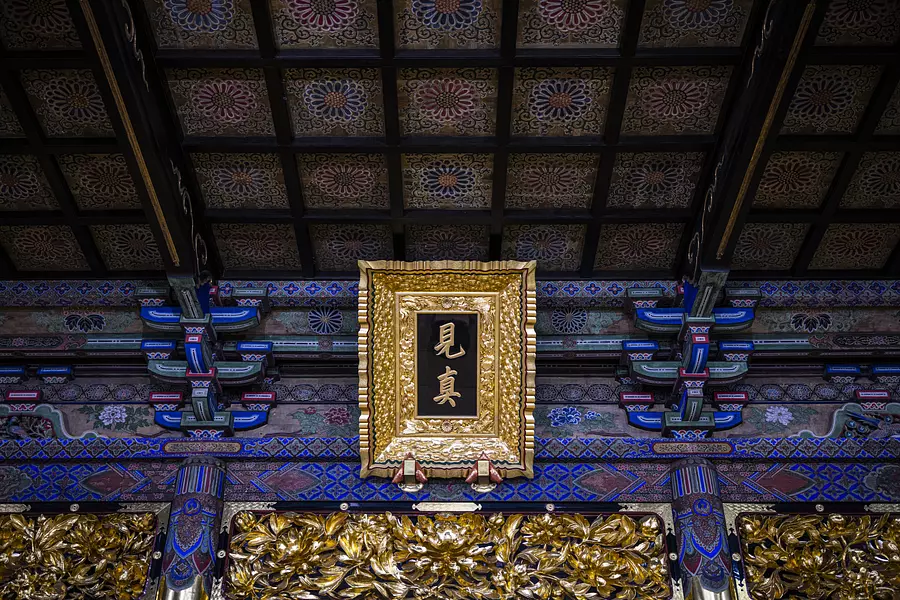
Nyorai-do, which was built in 1748 and stands alongside the large Miei-do, is also characterized by its high quality architecture.
You will be overwhelmed by the precision of each structure, including the elaborate carvings and intricately assembled pillars and eaves.

Mr. Murakami's Nyorai-do Hall enshrines a standing statue of Amida Nyorai, known as the ``Tathagata of Evidence,'' which is said to have been a gift from Mt. Hiei. In recent years, the doors have become open for those who wish to visit the temple, other than during memorial services.
Photographs taken by Mr. Asada are displayed in the tea ceremony area on the grounds of Takada Honzan and in the Bonbori facility located right next to Takada Honzan. Once again, I took a photo with the person who took the photo.

Mr. Asada: When I think of the word ``photo'', the first thing that comes to mind for me is a New Year's card. Taking photos for New Year's cards was an annual event in the Asada family, starting right after I was born and continuing until I graduated from high school. (Unlike the movie) it wasn't filmed at Takada Honzan. At the end of the year, my father and I would go to tourist spots in TsuCity, where my father would set up a camera and take pictures of me and my brother.
I used to have fun doing it when I was little, but as I got to middle school and high school, I started to feel shy and started taking pictures in front of my house or in the parking lot because I didn't want to go out. I did (lol). However, it was definitely a starting experience for me in photography. As I grew up, I fell in love with photography and started taking family photos...and before I knew it, I was doing the same thing. The process of taking time to take each photo overlaps in the Asada family's New Year's card photo and the photo I take. I think it's a strange feeling.
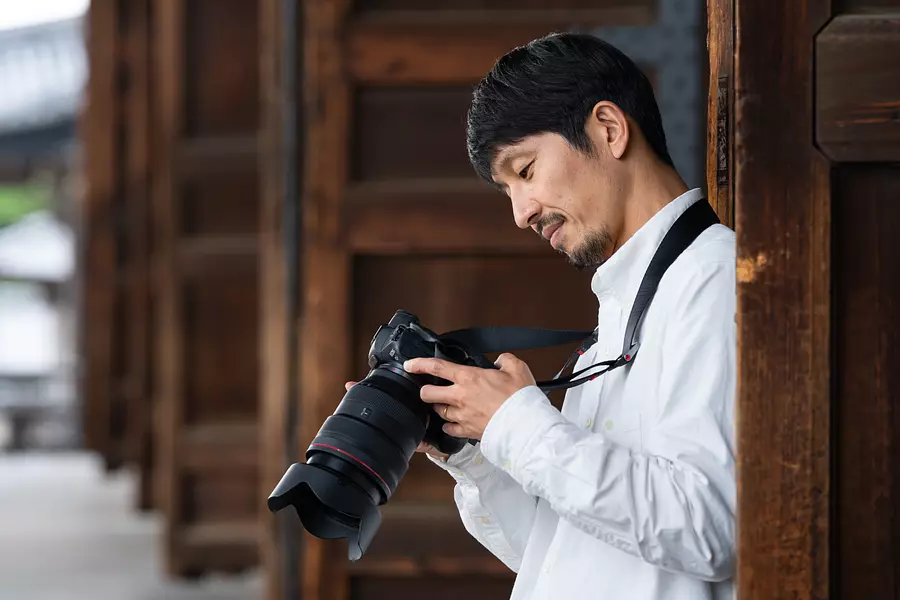
Asada's father was slow in taking pictures. Since it's a manual camera, it took some time to set it up. I took a lot of time to adjust the focus and exposure, and even though the person was smiling, I didn't release the shutter. I always thought, "You're so slow."
However, even now I spend a lot of time and persevere in taking photos, so maybe I inherited that from my father. At that time, I thought, ``It's slow,'' but now I think, ``I'm slow, too.'' I think there are some similarities among family members, and my father and I are similar when it comes to taking photos.
Mr. Asada: I believe that ``people who take photos should actively participate in the process of having their photos taken.'' I've often heard photographers say, ``I specialize in photography, so I don't like being photographed.'' But in my mind, I don't think it makes sense.
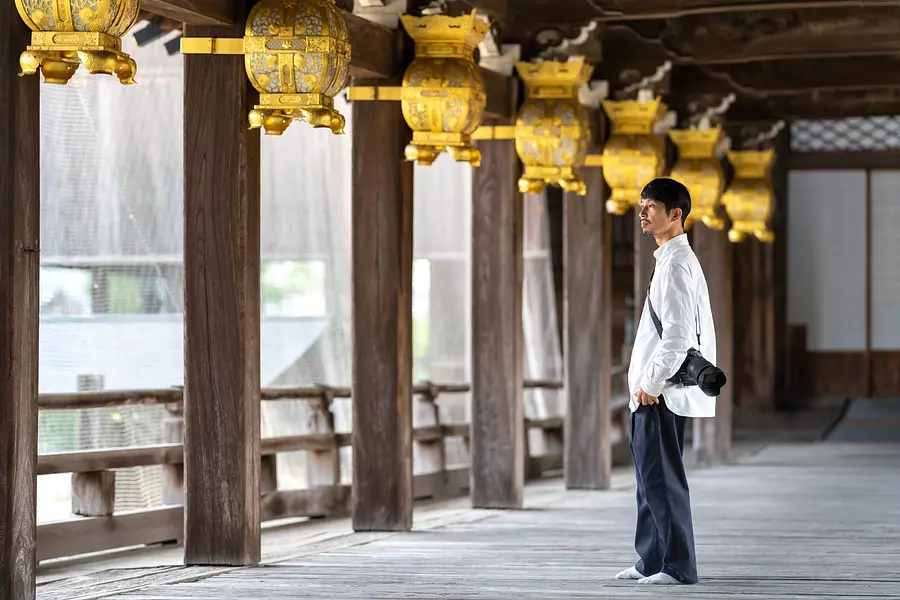
Asada-san, if you often take photos, it would be good to know how the person being photographed feels. Considering the current situation, I think it's good to embody the idea of ``having fun taking photos.''
If you carry a camera in a town or park, you may be looked at with anxiety, wondering if you're being voyeurized, and it seems that having your photo taken has some kind of negative image attached to it. It's becoming difficult to take snapshots, and it can be said that photographers are finding it difficult to take photos.
I think photographers themselves have to change this situation. That's why when it comes to being photographed, I want to maintain an attitude of ``I love it.''

■ SENJUJIHeadTempleoftheShinshuTakadaSchool Information
SENJUJIHeadTempleoftheShinshuTakadaSchool
059-232-4171
Because the temple closes at 15:30,
If possible, please arrive by around 3:00 pm.
Teahouse Renshinan 10:00-15:00
There is a large parking lot (free of charge, bus available) near JR isshinden Station.
Click here for details (Google Maps) https://goo.gl/j7sXoB
5 minutes walk from JR isshinden Station
15 minutes from JR/Kintetsu Tsu Station by bus bound for isshinden or Mie Hospital, get off at Motoyama-mae bus stop
Approximately 15 minutes from Ise Expressway Tsu IC
Approximately 15 minutes from Ise Expressway Geino IC
A yakiniku restaurant that has been in business for 45 years. This is also the store where Mr. Asada worked part-time during his high school days. We are particular about high-quality meat, including A5 rank Matsusaka beef, and in addition to Matsusaka beef, we use high-quality beef from different suppliers for each cut, and we have devised ways to cut it to suit the meat. The secret sauce, which is a miso-based sauce with spicy seasonings, is also extremely delicious. It is a famous restaurant that has been loved for a long time, and children who have been regulars for a long time have grown up and are now regulars.
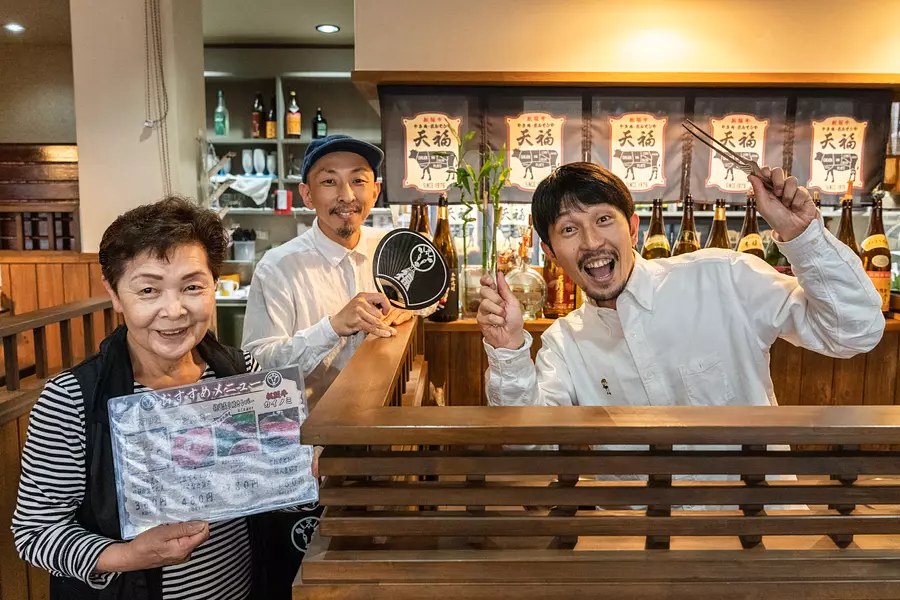
*Masks are removed only when taking photos.
A mother has been running the store, and her son, Koji, is the current owner.
Back when Kouji (Asada) Masashi was there, people from the same school were working together part-time, and we got along really well. I was one or two years older than Masashi and went to a different school, but thanks to these people, I made more friends in my hometown.
Mama was the most organized staff member. We seemed to get along well both at work and in our private lives.
So, I only did good-looking guys (lol)
Koji-san was stylish and had a lot of unique personalities.
Asada-san, I was looking for a good part-time job, and a friend of mine introduced me to Tenpuku. When I was in high school, my definition of being an adult was someone who could go out to eat yakiniku by themselves (lol). If I work at Tenpuku, will I be able to eat Yakiniku by myself? I remember thinking this and becoming interested in it as a part-time job. When I started working there, I actually had the opportunity to eat meat once a week after the store closed.
Mama-san: My husband used to treat all the staff. I like seeing young kids eating a lot, and they say, "I'll eat everything!" You made a big move (lol)
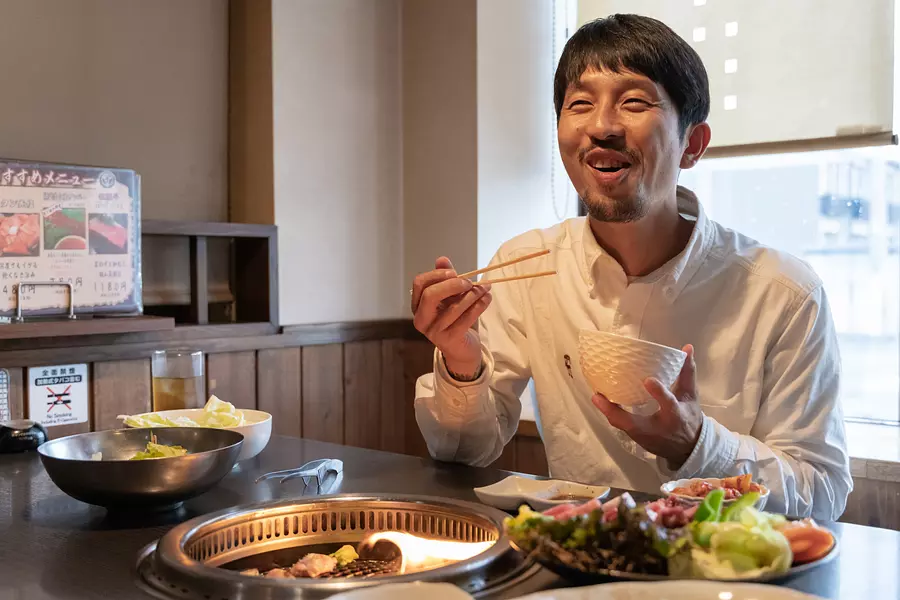
I ate a lot of delicious meat at Asada-san Tenpuku, and my taste for yakiniku grew. I have the opportunity to eat yakiniku when I go to various places around the country, and once again I am impressed by the high level of yakiniku in Mie Prefecture and TsuCity.
Also, going out to eat Yakiniku on a regular basis may be a unique culture TsuCity. Going out to eat Yakiniku feels like a luxury, doesn't it? In TsuCity, it might not be as simple as going out for ramen, but (even if it's not a special occasion) people go there like, ``Let's go to Yakiniku today.'' The quality of each restaurant, including Tenpuku, is high, and I got used to delicious yakiniku from an early age. Everyone has something like their favorite ``My Yakiniku Restaurant.''
Mr. Asada's favorite menu items include ``Beef Surami (salt), 480 yen excluding tax,'' ``Senmai (grilled), 480 yen excluding tax,'' and ``Hormone, 580 yen excluding tax.'' Mr. Asada loves Yakiniku. They seemed to have a lot of fun photographing Niku.
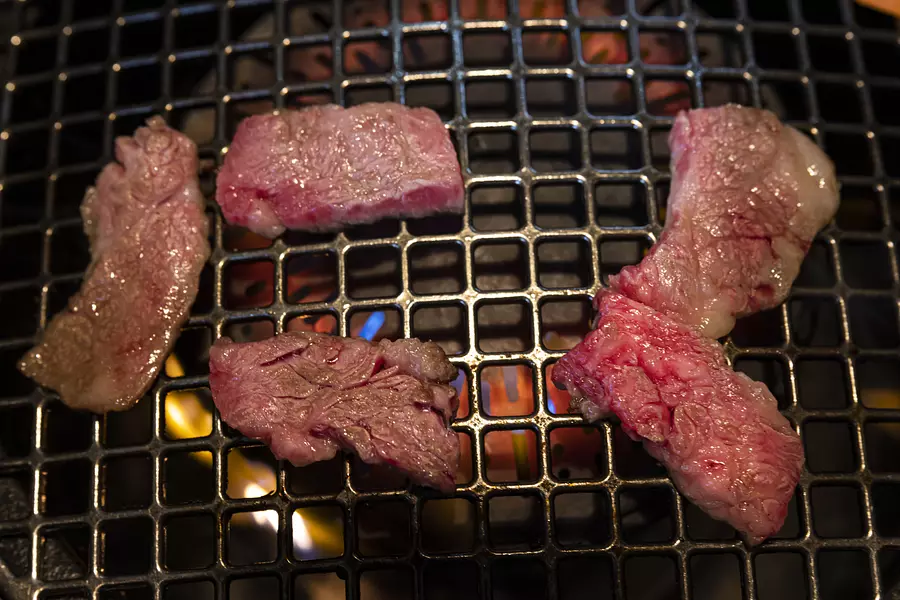
Mr. Asada: Sometimes you'll see green onions shaped into hearts, or food made to resemble something. This time, I took a picture of the meat because it looked like the hiragana ``niku''.
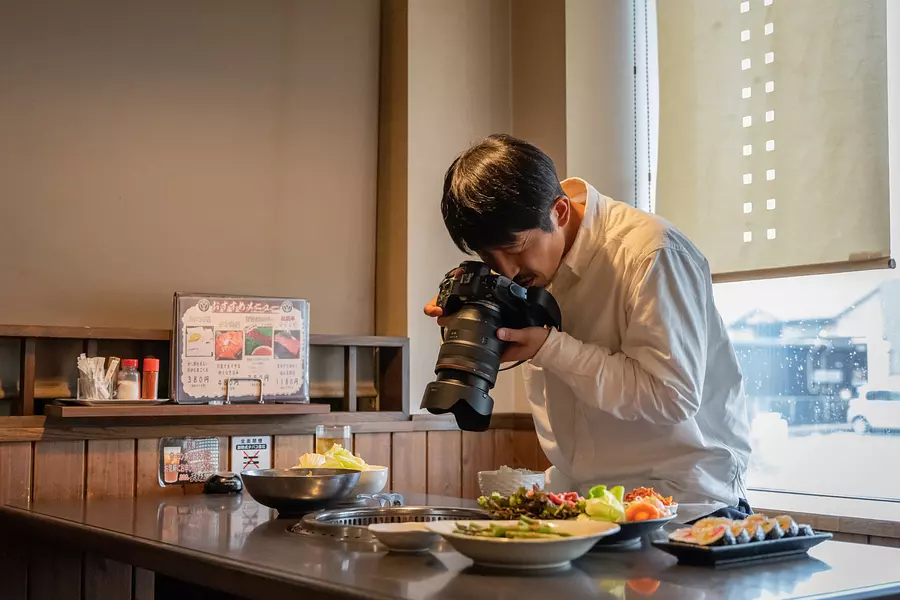
Asada-san, there were all kinds of customers coming to Tenpuku, so it was a great social study for me. I go to the tables of all kinds of customers, including regulars who talk to me a lot, and customers who come with their families and have a good time, and I take their orders and bring them tea... Also, there was a time when a super-scary senior came over and I panicked and thought, ``Who's going to order?!'' (laughs) I also learned how to grill meat by watching mom grilling meat for bento boxes.
Mama Masashi-kun, you've gotten better at grilling meat.
Mr. Asada, whenever we go to Yakiniku with me, I always cook everything. Baking it and serving it to everyone is fun, or rather, it's a pleasure.
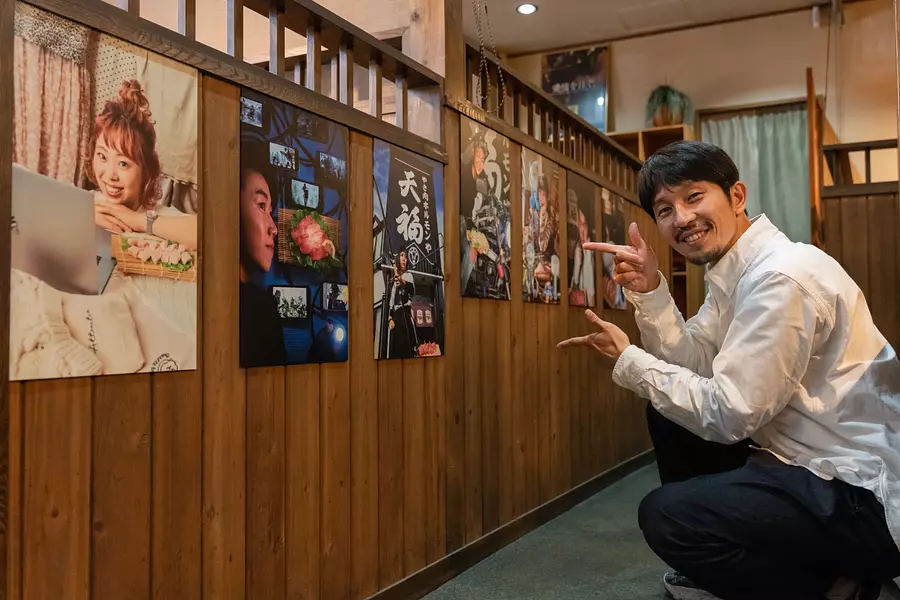
Kouji-san, Masashi-kun's recognition level in Tsu is amazing. (Although I didn't write that it was photographed by Masashi Asada), while the regulars came many times, I thought, ``Hmm?'' Could this poster be a photo of Mr. Asada? They will notice that.
Each mom consults with Masashi about what kind of image they would like to have in the photo, and then has the photo taken.
I asked Masashi to take pictures because I wanted the children working part-time to feel like they are needed by this store.
Mr. Asada: Many of the part-time workers at Tenpuku are high school students, so they usually change over every three years. (From the store's point of view) How many part-time workers were involved in total? So many people have worked here. So, I may be just a small part of that, but for me, working part-time here has been a great experience for me. I think it's the same for all the part-timers I've worked so far, so I took a photo to remember it.

Hyakugo Bank Marunouchi Headquarters Building
Movie “Asada family! ', a panoramic view of TsuCity was filmed on the rooftop of Hyakugo Bank. While looking at the scenery from the rooftop and upper floors of Hyakugo Bank, we asked Mr. Asada about his future activities.
*Normally, the general public is not allowed to enter. This time we had special permission to enter.
After Mr. Asada moved to Tokyo, I wanted to come back to TsuCity someday. However, Tokyo has more cutting-edge and exciting photo shoots, and the physical workload is also heavier, so I continued to work as a photographer in Tokyo. My desire to return to TsuCity has been growing stronger since I turned 30, but I've been wondering when I should go back...
For the past three years, I've been working alone, but this year my son was entering elementary school. If I can't be with him now, my son will move further and further away from his parents, and we won't have time to be together as a family...I also feel lonely. With the onset of the coronavirus pandemic, the shift to remote work has progressed, and we have entered an era in which work is concentrated in regional areas rather than in Tokyo, which also encouraged me to return to Tsu. When I turned 41, I realized my dream of ``I want to become a world-class photographer while still taking photos in Tsu.'' I thought now was the time to take on the challenge.
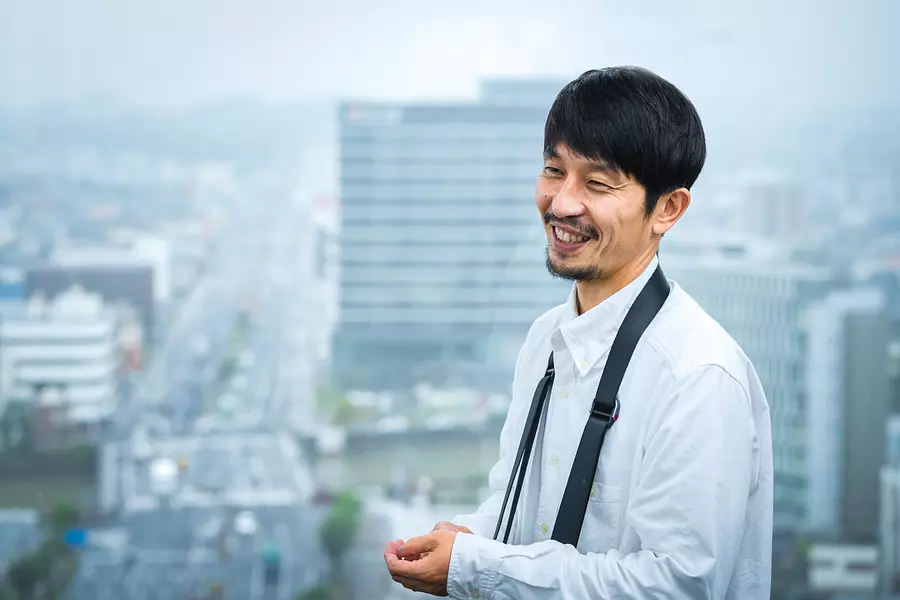
*Masks are removed only when taking photos.
Mr. Asada, I think it's healthy to want to leave your hometown. But beyond that, I think other emotions will emerge. There are some views that can be seen simply by going outside. I guess the people around me are polarized between those who left Tsu and those who stayed. I think there are many people who remain in Tsu, especially those who want to revitalize the town.
Also, even if you don't go so far as to ``encourage the atmosphere,'' just saying ``Maybe I should buy something from Mie or Tsu'' is a really good thing. I also like the fashionable things from Tokyo (lol). I think that kind of thing is also a love of one's hometown. I also believe that the way people see their town will change if they learn about their hometown and develop a relationship with it. I want to give people an opportunity through my photos.
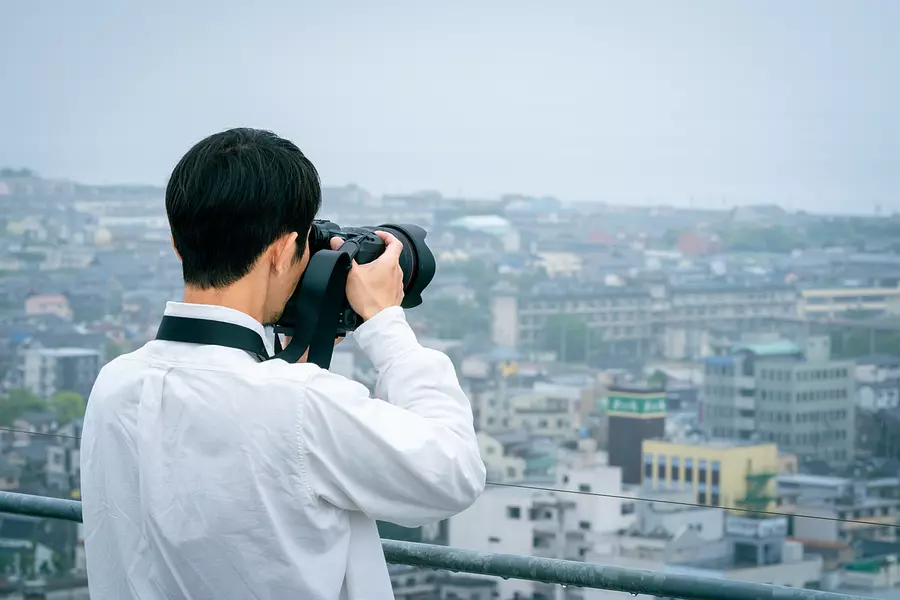
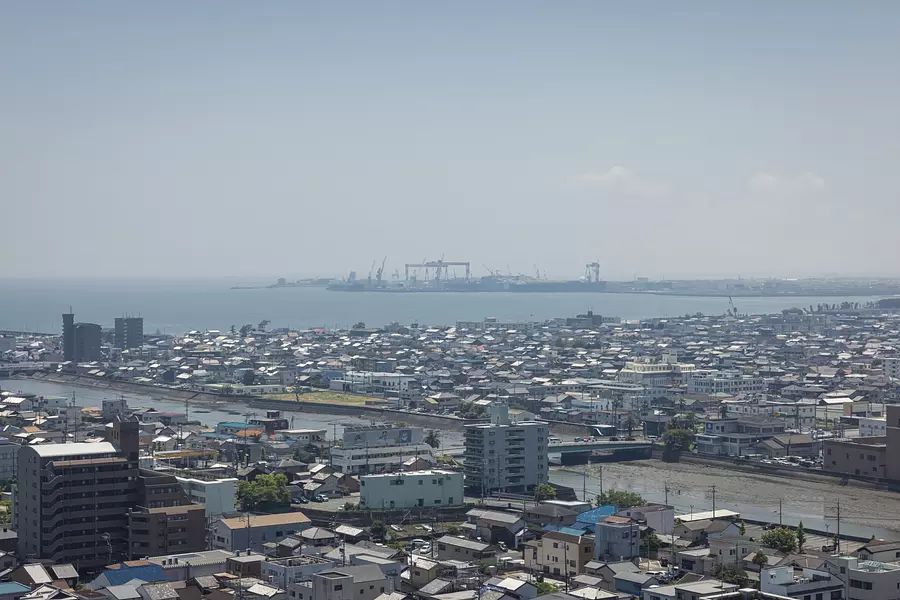
Asada-san...I'm not always good at expressing what I like about Tsu, but what I like about Tsu is that it's my hometown. I used to think of it as a rural, uninteresting town, but I'm starting to see it more and more. I've grown fond of Tsu, and I've come to see it as a special landscape, and I think my age has had a big effect on it, but my impression of Tsu has changed.
For example, I would be happy if my boys and girls were stylish, handsome, and young, and everyone said they were nice. Rather, even if you're not old or handsome, if you have fond memories of someone, don't you like yourself? It's close to that feeling. In other words, there is nothing in me that makes me dislike TsuCity. When asked, ``What do you like about Tsu?'', people usually say things like, ``We have delicious food like this,'' or ``There are a lot of people like this,'' or ``There are some nice spots.'' I tend to answer from a tourist perspective, like, ``Yo,'' because it feels like a theory.
To be honest, I don't think that it's a very good place...For me, it's a place where the time I've experienced is scattered all over the place, and I can't change it for anything else. That's my favorite part of Tsu.
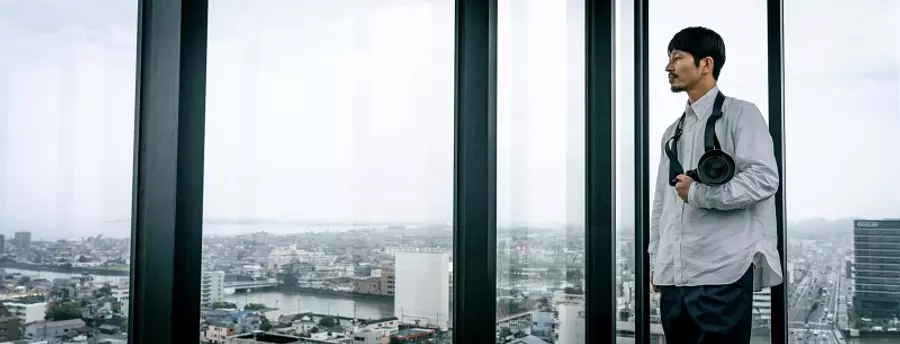
To conclude, we asked Mr. Asada to give us his thoughts on this tour of TsuCity.
Asada-san: First of all, I think it was great that I was able to say hello to Kuwajiro Horie (mentioned in the first part). Also, when I saw the word ``Mima'' at Takada Honzan, I thought again, ``I have to work hard at photography.'' I felt that I was able to do my best thanks to both Tenpuku and Tone Kashikan. I thought I'd try my best again tomorrow. As the head of the Mie Travel Camera Club, from now on I would like to be able to convey a lot of good things about Mie Prefecture, not just what I know!
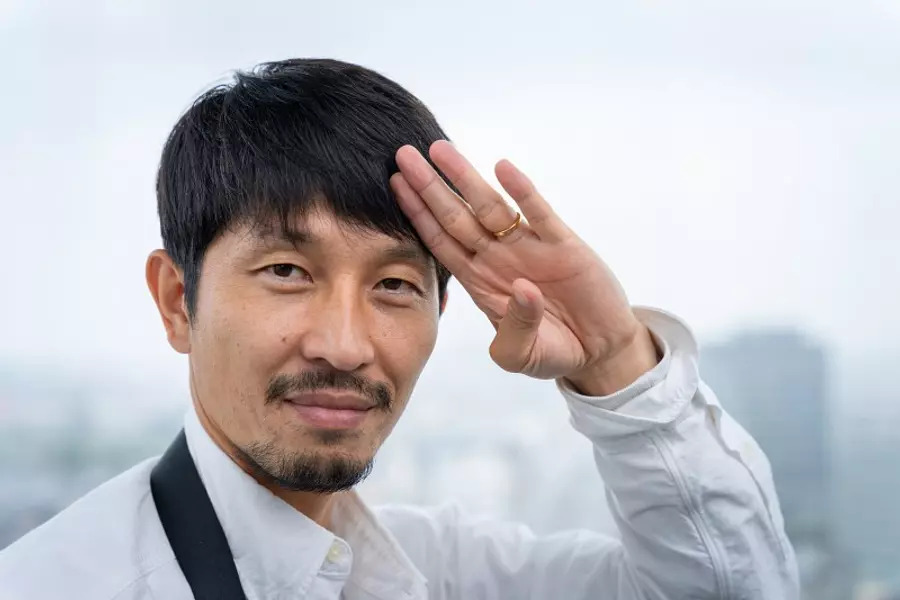
Masashi Asada's TsuCity tour report, which we delivered in the first and second parts, has been delivered in a large volume.
Look forward to the next report!
Text/Photos (other than photos taken by Asada): MSLP
| Category | |
|---|---|
| season | |
| area |

